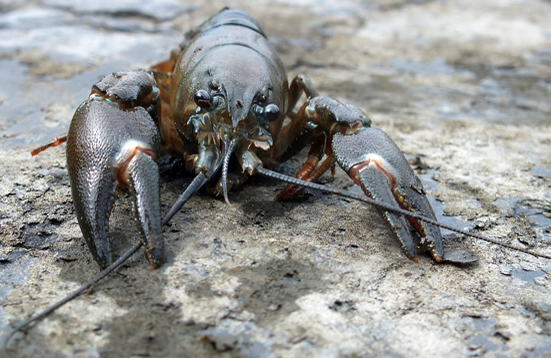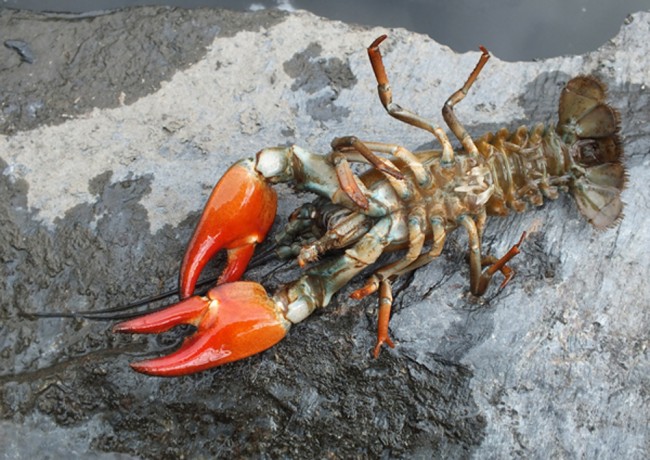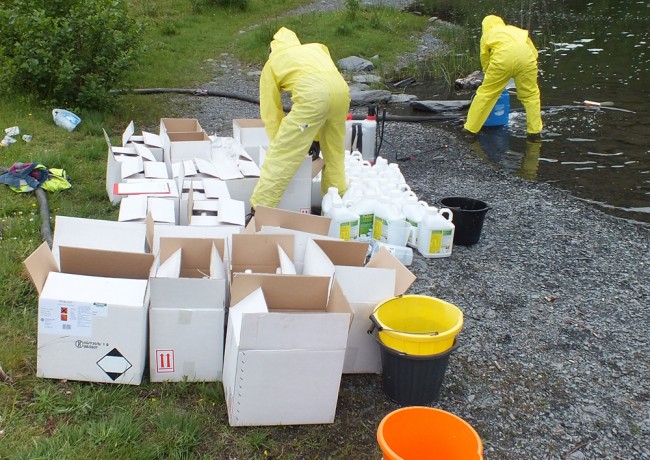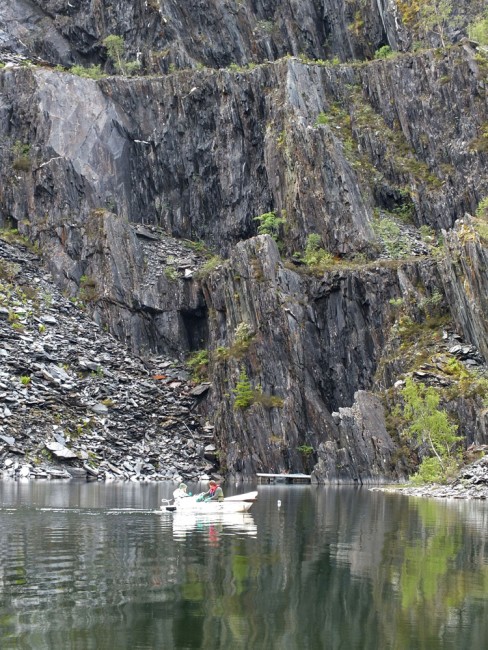ART have experience of controlling American Signal Crayfish gained during the eradication attempt at Ballachulish Quarry in 2012 when ART provided 3 staff to assist. This was a large but isolated quarry pond that had been infested by an original release of approximately 12 crayfish some years beforehand.
The reason ART was so willing to heavily commit for the duration of the control was that apart from being trained in crayfish ecology and control methods and qualified in pesticide application, this was an opportunity to increase our hands on experience and skills in case we ever needed this expertise here in Ayrshire.

A large crayfish killed at Ballachulish shoing the natural colours immediately after removal from the water. It’s obvious why they are difficult to spot under normal conditions.
This was a disused quarry pond of some 40 – 50,000 cubic metres in volume and around 1.8 hectares in area (4.5acres). A challenge but as there was no outflow and virtually no fish population, distinctly possible but by no means easy.
Treatment using Pyblast (Pyrethrin based chemical) was approved and over 25 volunteers from Trusts and other agencies (SNH, SEPA, Local Authorities, FC etc) turned up over the 2 days of treatments to assist Lochaber Fisheries Trust with this work. Crayfish started dying immediately on application of the chemical to the water’s surface but in deeper areas, it took more than 24hours for these creatures to die. Costs of chemicals and professional consultancy fees and monitoring was around £70,000. Long term monitoring since the treatment so far has failed to find any crayfish so hopefully this will be successful but monitoring continues.
With the current situation we face in Ayrshire, we are fortunate to have many skills and experience within the team to draw on and will do whatever we can to prevent and/or contain the spread. If anyone has this experience in Scotland, then we do, so rest assured that we are doing all we can within the current guidelines and legislation and in full consultation with SNH and SEPA. We fully support the SNH policy on licensed trapping for very good reason and recognise that poisoining isn’t an option. Therefore we have limitations that we are required to observe and will.





